Scrubbing earthquakes from NRC’s website (after reporting them) in Canadian frac fields has been a common occurrence in recent years. Why no main media reporting on this quake, and no posting of it by the “regulator?”
Why did NRC remove all traces of this earthquake? Because it was caused by frac’ing?
What are the authorities hiding from Canadians?
Screen shot of the feed reader notifying about this 3.9M earthquake that has now vanished without explanation:
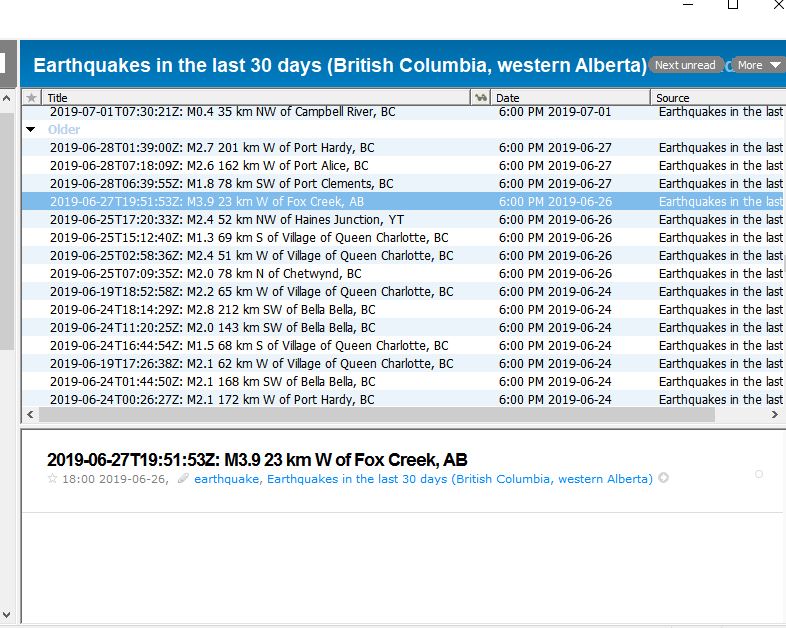
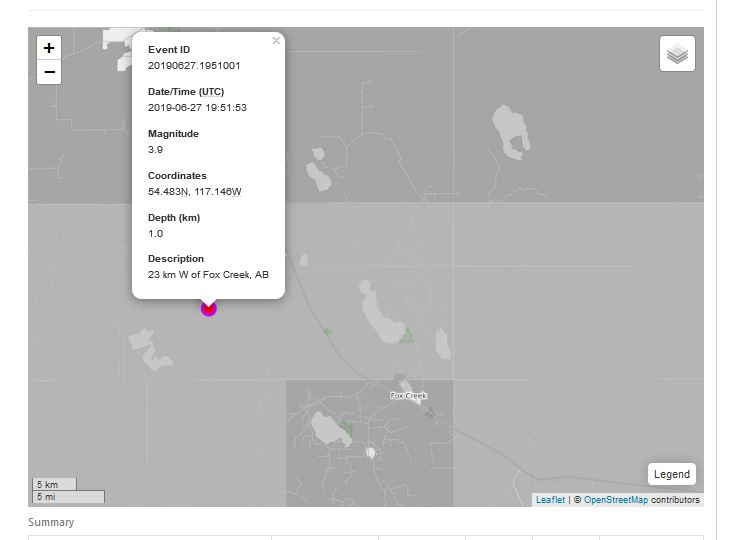
http://www.earthquakescanada.nrcan.gc.ca/stndon/NEDB-BNDS/bulletin-en.php
If you search the event ID on NRC’s site, they now show nothing to report.
The quake vanished, poof, magic.
Nothing posted by AER: https://www.aer.ca/providing-information/by-topic/seismic-activity
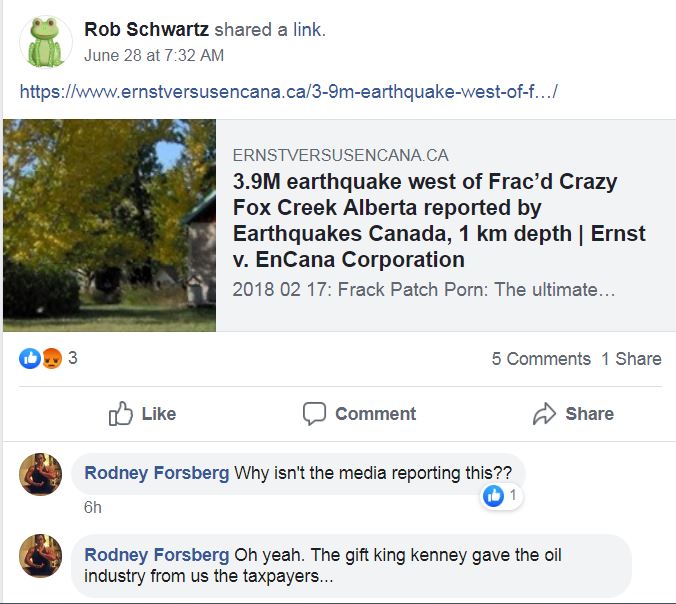
Excellent question by Rodney Forsberg on ASRG Facebook page
More information will be posted when/if it becomes available
Refer also to:
019 07 26: Encana causes dozens frac quakes near Kingfisher, Oklahoma, including a 3.9M that might be the states largest
2018 02 09:”Insane” Greed: Fox Creek Shakes as Frackers Drill for Condensate to Dilute Bitumen
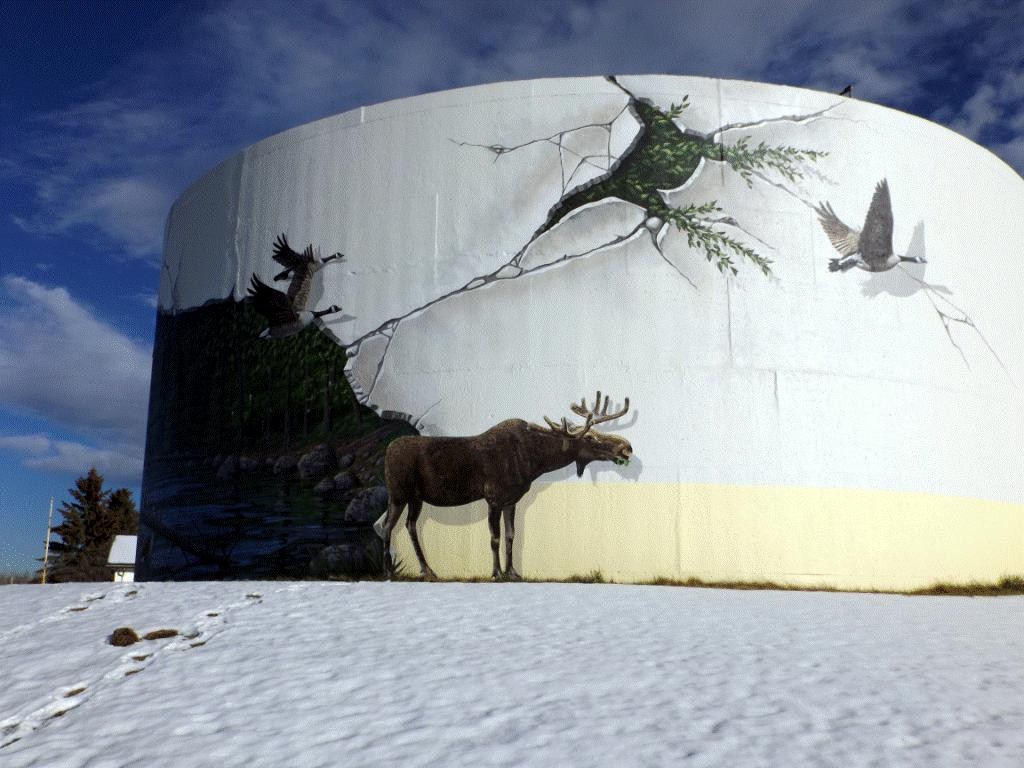
Fox Creek’s Water Tower mural, funded by frac quake shaker Chevron
Complete with frac quake crack damage imagery?



2015 02 20: Fox Creek frac quakes make AER play deregulation with you and your loved ones: “Red Light = Green Light”
2015 01 31: Fracing Record Breaking Quaking at Fox Creek Alberta?
…
For years industry and fracking experts argued the technology wouldn’t cause quakes that could be felt on the surface.
But specialists in earthquake hazards such as Gail Atkinson, who holds the Canada Research Chair in Induced Seismicity Hazards at Ontario’s Western University, argued the opposite.
“I have consistently maintained this kind of thing can happen,” said Atkinson. “With fracking, the magnitudes have been increasing every year.”
Natural Resources Canada reported a swarm of at least 15 earthquakes this January west of Fox Creek in a region where Encana, Talisman, Apache, Chevron Canada and ExxonMobile intensified the drilling and fracking of two-kilometre-long horizontal wells nearly a year ago.
The companies are cracking rock in the unconventional Duvernay shale at a depth of 3,000 metres in order to extract condensates, a product typically worth more than oil and used to dilute heavy bitumen for pipeline transport.
An investigation by Atkinson last year into a related swarm of 25 small earthquakes in the same area ranging in magnitude from 2.5 to 3.5 between 2013 and 2014 found that the events also corresponded “closely to hydraulic fracture treatments of oil and gas production wells in the immediate vicinity.”
Last Friday’s shaker
Since Dec. 2014, a second swarm of earthquakes has rattled the region within a 50-kilometre radius of the community of Fox Creek, an oil and gas town with a population of 2,000 people in northern Alberta. The community is about 260 kilometres north of Edmonton.
The largest Fox Creek quake registered 4.4 magnitude and caused walls to shake and beds to move. It became the source of constant social chatter on Friday, Jan. 23.
“When we hit a magnitude of 3.8 this month, I’d thought for sure that the industry would stop and take a smoke break to figure out what’s going on,”said 57-year-old Barb Ryan, a Fox Creek resident who has been keeping an eye on resource development. “But they didn’t. Many are in denial here.”
Ryan has pressed for more transparent monitoring over the fracking industry’s growing impacts on water, air and public health, but said she has faced resistance from local authorities. (She also graphed the Fox Creek swarms using coordinates from Natural Resources Canada.)
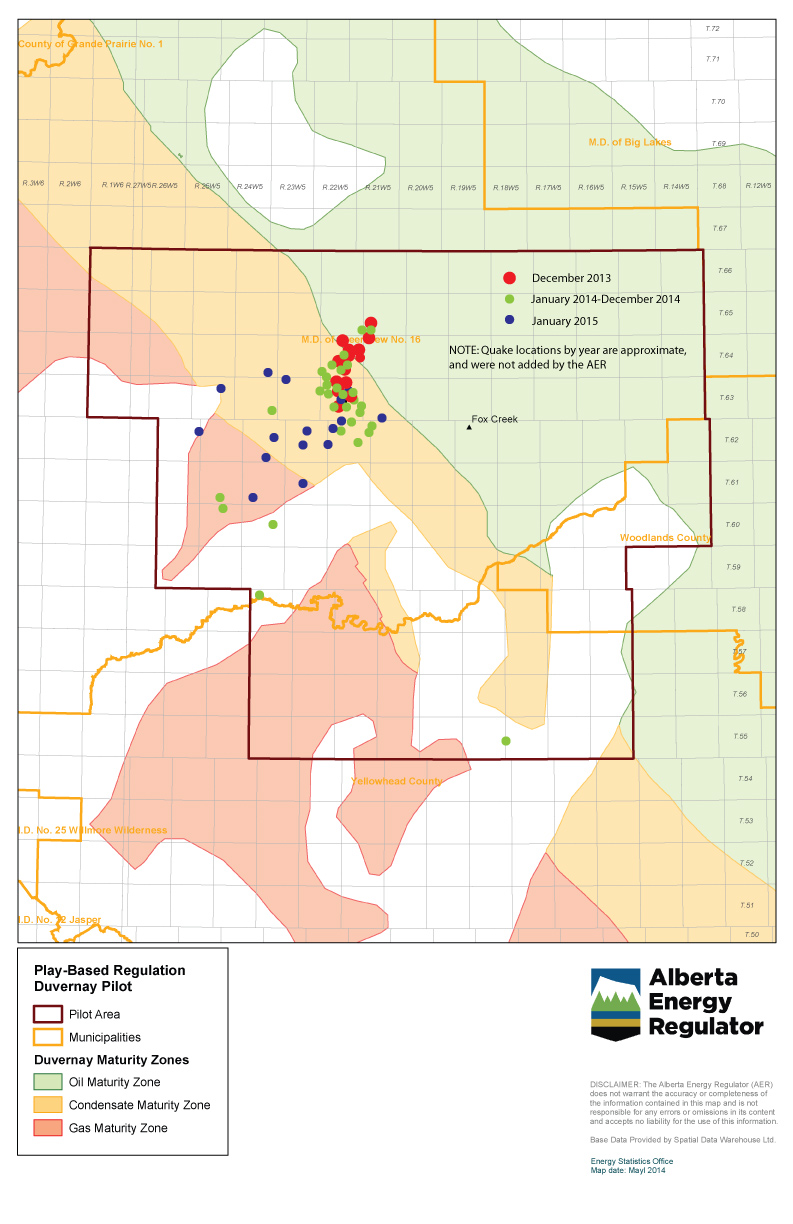
The earthquakes have mostly taken place in the province’s first “play based regulation pilot,” a geographical area where the regulator has given blanket approval to the development of the formation as opposed to approving one well at a time. The Alberta Energy Regulator says the strategy “results in regulatory efficiencies,” but critics call it a new form of deregulation.
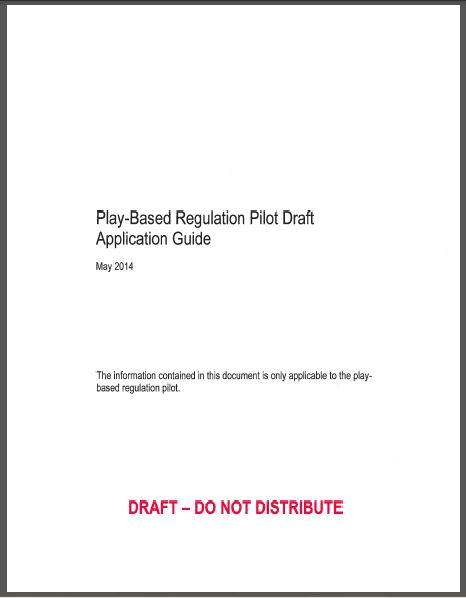
Ryan said that most people in Fox Creek know little to nothing about the first or second earthquake swarm, because there has been no public reporting on the events.
To recognize the risk of earthquake hazards in Alberta might put livelihoods on the line and businesses at risk, she said. “Cognitive dissonance prevents some communities from admitting or even discussing the resource industry’s impacts. The topic is very divisive.”
Many Alberta geologists did not answer Tyee queries on the earthquake swarms.
Based on public data from Natural Resources Canada, Ryan estimates the region around Fox Creek has recorded approximately 94 small quakes since 1990.
“We’ve had more than 70 of those quakes since Dec. 2013,” she said. “We once averaged zero to three quakes a year.
Since the initial swarm, we’ve averaged zero to four quakes a day.”
Rise of ‘man-made’ quakes
Overwhelming scientific evidence from the U.S. Geological Survey now shows that the fracking industry and its need for huge wastewater disposal wells have fostered unprecedented “man-made earthquakes” in the eastern and central U.S. In the process the industry has rewritten seismic records in Ohio, Oklahoma, Colorado, Kansas, Arkansas and Texas.
Some experts now argue that man-made industry quakes are more dangerous than natural ones.
Western University’s Atkinson said that “the hazards may be significant, depending on the proximity of infrastructure, and should be carefully evaluated… the hazard is concentrated close to the activity [within about five kilometres], because the motions die off with distance.”
Added Atkinson: “The earthquake hazard from induced seismicity in places like Alberta where seismicity is being triggered is greater than the natural earthquake hazard… it will take regulators in the United States and Canada a while to figure this out.”
…
